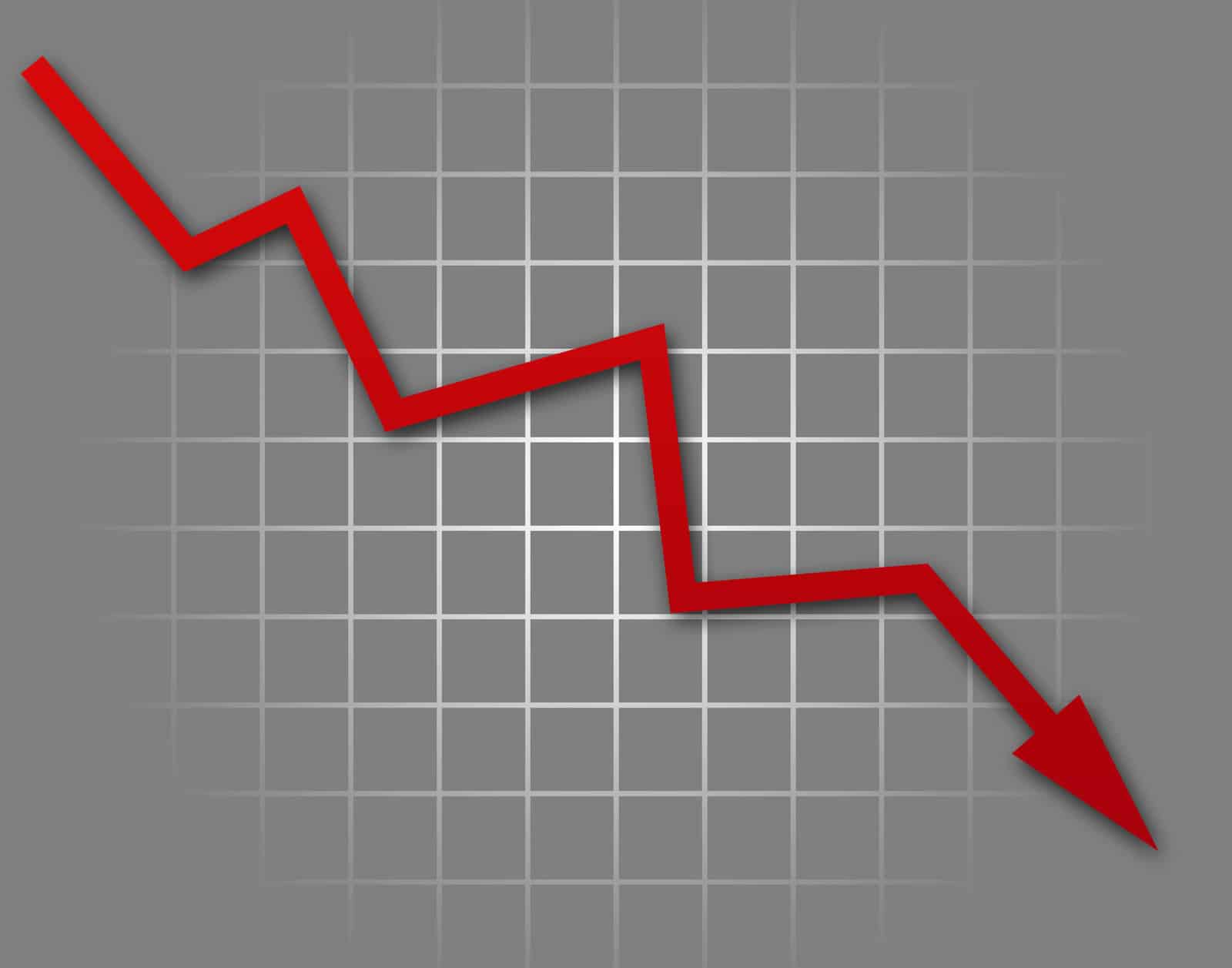

Finance
Do Bank Stocks Go Up When Interest Rates Rise?
Published: November 1, 2023
Discover how interest rate changes can impact bank stocks and the finance industry. Learn if bank stocks typically rise during periods of increasing interest rates.
(Many of the links in this article redirect to a specific reviewed product. Your purchase of these products through affiliate links helps to generate commission for LiveWell, at no extra cost. Learn more)
Table of Contents
Introduction
When it comes to investing in the stock market, one of the key factors that can significantly impact the performance of certain sectors is interest rates. In particular, bank stocks tend to be closely tied to interest rate movements. But do bank stocks really go up when interest rates rise? Let’s dive deeper into the relationship between bank stocks and interest rates to better understand their correlation.
Before delving into the impact on bank stocks, it is crucial to have a clear understanding of interest rates. In simple terms, interest rates are the cost of borrowing money, typically set by central banks to control inflation and stabilize the economy. When interest rates rise, the cost of borrowing increases, which affects various segments of the economy, including the banking sector.
The relationship between interest rates and bank stocks is not a direct one. Various factors come into play when determining how bank stocks will react to interest rate changes. It is essential to consider these factors to gain a comprehensive understanding of the potential impact.
One of the primary factors affecting bank stock performance is the net interest margin. A bank’s net interest margin is the difference between the interest income it earns from loans and the interest it pays on deposits and other liabilities. When interest rates rise, banks typically benefit from higher interest income, which can positively impact their profitability and, in turn, their stock prices.
However, the net interest margin is just one piece of the puzzle. Other important factors include the overall economic environment, competition within the banking sector, regulatory policies, and investor sentiment. These factors can either amplify or mitigate the impact of interest rate changes on bank stocks.
To gain insight into the historical relationship between bank stocks and interest rates, let’s analyze past data. Historical analysis can provide valuable information on how bank stocks have performed during different interest rate cycles.
It is important to note that historical correlation does not guarantee future performance. Nonetheless, studying past trends can offer valuable insights into potential patterns and market behavior.
In the next section, we will dive into a historical analysis of bank stocks and interest rates to gain a better understanding of their relationship.
Understanding Interest Rates
Before delving into the impact of interest rates on bank stocks, it’s essential to have a solid understanding of what interest rates are and how they work. Interest rates play a fundamental role in the functioning of the financial system and have a significant impact on the economy as a whole.
Interest rates are the costs associated with borrowing money. They are set by central banks, such as the Federal Reserve in the United States, to control inflation, stimulate economic growth, or maintain price stability. These rates act as a benchmark for the cost of borrowing for individuals, businesses, and financial institutions.
When central banks raise interest rates, borrowing becomes more expensive. This discourages borrowing and encourages saving, which can help control inflation and moderate economic growth. Conversely, when interest rates are lowered, borrowing becomes cheaper, providing an incentive for businesses and consumers to borrow and spend, thus stimulating economic activity.
One of the primary tools used by central banks to influence interest rates is the adjustment of the overnight lending rate. For instance, the Federal Reserve sets the federal funds rate, which is the interest rate at which depository institutions lend funds to each other overnight.
Interest rates can have a profound impact on various sectors, including the banking industry. Banks rely on the difference between the interest they earn from lending money and the interest they pay on deposits to generate revenue. This difference is known as the net interest margin.
When interest rates rise, banks can charge higher interest rates on loans, resulting in increased interest income. However, they also have to pay higher interest rates on deposits, which can eat into their profitability. Conversely, when interest rates decline, banks face the challenge of reducing their loan rates while still paying interest on deposits, which can compress their net interest margin.
Understanding the dynamics of interest rates is crucial for investors looking to analyze bank stocks. By monitoring interest rate movements and assessing their potential impact on the banking sector, investors can make informed decisions about their investment strategies.
In the next section, we will explore the specific impact that interest rates have on bank stocks, taking into consideration various factors that influence their performance.
Impact of Interest Rates on Bank Stocks
Interest rates have a significant impact on the performance of bank stocks. However, the relationship between interest rates and bank stocks is not a straightforward one. Several factors come into play, influencing how bank stocks react to changes in interest rates.
One of the key factors is the net interest margin (NIM). As mentioned earlier, banks generate revenue by earning interest on loans and other investments while also paying interest on deposits. When interest rates rise, banks can charge higher interest rates on loans, leading to an increase in interest income. This can potentially boost their profitability and positively impact their stock prices.
Another factor to consider is the demand for loans. When interest rates are low, borrowing becomes more attractive, as the cost of borrowing is minimized. This can lead to increased loan demand, benefiting the banking sector. Conversely, when interest rates rise, the demand for loans may decrease, which could have a negative impact on bank stocks.
The overall economic environment is also crucial in assessing the impact of interest rates on bank stocks. When interest rates rise, it can signal a strengthening economy. A robust economy often translates to increased business activity, higher consumer spending, and lower default rates on loans, all of which can benefit the banking sector. Conversely, if interest rates rise due to inflationary pressures or other economic concerns, it could lead to a more challenging environment for banks.
Additionally, competition within the banking sector plays a role in determining how bank stocks are affected by interest rate changes. When interest rates rise, banks may face increased competition for deposits, as other investment options become more attractive. This can put pressure on their net interest margin and potentially impact their stock prices.
Regulatory policies can also influence the impact of interest rates on bank stocks. Changes in regulations can affect the cost of doing business for banks and impact their profitability. For example, stricter regulations may require banks to hold more capital or comply with additional compliance measures, which can increase their expenses and potentially affect their stock performance.
Finally, investor sentiment and market expectations can significantly influence the performance of bank stocks in relation to interest rate movements. If investors perceive a rise in interest rates as positive for the banking sector, it could lead to increased demand for bank stocks, potentially driving up their prices. Conversely, if there are concerns about the impact of rising interest rates on the economy, it could lead to a sell-off in bank stocks.
Overall, the impact of interest rates on bank stocks varies depending on a range of factors. It is important to consider these factors when analyzing the correlation between interest rates and bank stock performance.
Factors Affecting Bank Stock Performance
Bank stock performance is influenced by a variety of factors, extending beyond just interest rates. Understanding these key factors is crucial for investors seeking to analyze and predict the performance of bank stocks. Let’s explore some of the significant factors that can impact bank stock performance:
1. Macroeconomic Factors: The overall health and performance of the economy play a vital role in influencing bank stock performance. Economic indicators such as GDP growth, employment rates, inflation, and consumer spending can impact the profitability and loan quality of banks. A strong and growing economy is generally beneficial for banks, while a weak or contracting economy can put downward pressure on bank stock prices.
2. Regulatory Environment: Regulatory policies and changes in banking regulations can significantly impact bank stock performance. Regulations can affect the cost of doing business, compliance requirements, and capital reserve requirements for banks. Stricter regulations can increase operating expenses and put downward pressure on bank stock prices. Conversely, looser regulations may lead to increased profitability and potentially boost bank stock prices.
3. Interest Rate Environment: As discussed earlier, changes in interest rates can have a direct impact on bank stock performance, particularly through their influence on the net interest margin. When interest rates rise, banks can charge higher interest rates on loans, leading to increased profitability and potentially higher stock prices. Conversely, declining interest rates can compress the net interest margin and put downward pressure on bank stock performance.
4. Credit Quality: The credit quality of a bank’s loan portfolio is a critical factor in determining its financial health and performance. The level of non-performing loans, loan loss provisions, and the ability of borrowers to repay their loans all impact the profitability and stock performance of banks. A deteriorating credit quality can negatively impact bank stock prices, while improving credit quality can have a positive influence.
5. Competitive Landscape: The competitive environment within the banking industry can affect a bank’s ability to attract and retain customers, as well as its pricing power. Factors such as the number and strength of competitors, technological advancements, and customer preferences can impact a bank’s market share and profitability. Changes in the competitive landscape can influence bank stock prices.
6. Management Quality: The competence and effectiveness of a bank’s management team is a crucial factor in determining its performance. Strong leadership, strategic decision-making, risk management practices, and the ability to navigate changing market conditions are all important considerations for investors. Banks with strong management teams are more likely to exhibit favorable stock performance.
7. Investor Sentiment: Market sentiment, investor perception, and market expectations can all influence bank stock performance. Positive investor sentiment and confidence in the banking sector can lead to increased demand for bank stocks and potentially drive up prices. Conversely, negative sentiment or concerns about the industry’s outlook can put downward pressure on bank stock prices.
It is important for investors to consider these factors collectively when evaluating bank stocks. While interest rates play a significant role, analyzing the broader context and considering these additional factors can provide a more comprehensive understanding of bank stock performance.
Historical Analysis: Bank Stocks and Interest Rates
Examining historical data can provide valuable insights into the relationship between bank stocks and interest rates. However, it is important to note that historical correlation does not guarantee future performance. Nonetheless, studying past trends can offer valuable information and potential patterns to consider when analyzing the impact of interest rates on bank stocks.
Over the years, there has been a general observation that bank stocks tend to benefit from rising interest rates. As interest rates increase, banks can earn higher interest income from loans, potentially leading to improved profitability and higher stock prices.
Historically, during periods of economic expansion and rising interest rates, bank stocks have often outperformed other sectors of the market. This is because a growing economy generally leads to increased borrowing and lending activity, benefiting the banking sector.
However, it is essential to consider that the impact of interest rates on bank stocks can vary depending on various factors, as discussed earlier. The overall economic environment, regulatory policies, credit quality, and competition within the banking industry can all influence the relationship between interest rates and bank stock performance.
It is also worth noting that the relationship between interest rates and bank stock performance can exhibit some lag. It may take time for interest rate changes to fully impact bank profitability and stock prices. Therefore, investors should consider the potential time lag when assessing the impact of interest rate movements on bank stocks.
Another important consideration is the magnitude of interest rate changes. Smaller incremental changes may have a more gradual and muted impact on bank stock performance, while significant and unexpected interest rate shifts can generate more pronounced effects.
Additionally, it is insightful to analyze different interest rate cycles within the financial markets. During periods of falling interest rates, banks may face challenges in maintaining their net interest margin, which could impact their profitability and stock performance. Conversely, when interest rates rise, banks may experience improved profitability, leading to potential stock price appreciation.
In summary, historical analysis suggests a positive correlation between bank stocks and rising interest rates. However, the relationship between interest rates and bank stock performance is multifaceted and influenced by various factors. Investors should consider the broader economic context, regulatory environment, credit quality, competition, and investor sentiment when assessing the potential impact of interest rates on bank stocks.
Current Market Trends: Bank Stocks and Interest Rates
Understanding the current market trends in relation to bank stocks and interest rates is crucial for investors looking to make informed decisions. As of [current year], there are several noteworthy developments shaping the relationship between bank stocks and interest rates.
In recent years, interest rates have been relatively low, driven by central bank policies aimed at stimulating economic growth following the global financial crisis. Low interest rates have been beneficial for borrowers, as borrowing costs have remained affordable. However, they have presented challenges for banks, as their net interest margin has been compressed.
Market conditions, including the economic aftermath of the COVID-19 pandemic, have resulted in additional monetary stimulus measures, including further interest rate cuts and massive liquidity injections by central banks. These measures were implemented to support economic recovery and ensure the smooth functioning of financial markets.
These low interest rate environments can create a challenging environment for banks, particularly if they are unable to find alternative sources of revenue to offset the impact on their net interest margin. However, they can also stimulate loan demand and economic activity, which can benefit some banks.
It is important to monitor the actions and statements of central banks, as they provide guidance on their future monetary policy decisions. Any potential changes in interest rate policies can have a significant impact on bank stocks.
Another trend seen in the current market is the impact of technology and digital disruption on the banking industry. Fintech companies and digital banking platforms have emerged as strong contenders in the financial sector, challenging traditional banks. This has led to increased competition and pressure on bank profitability.
Furthermore, the regulatory environment continues to evolve, with governments and regulatory bodies implementing measures to enhance financial stability and consumer protection. These regulations can impact the operating costs and compliance requirements for banks, which may have implications for their profitability and stock performance.
In terms of investor sentiment, it is essential to consider market expectations and sentiment towards the banking sector. Investor sentiment can influence the demand for bank stocks and impact their prices. Positive sentiment, driven by favorable economic conditions and confidence in the banking sector, can drive up bank stocks, while negative sentiment and concerns about economic uncertainty can have the opposite effect.
However, it is crucial to remember that market trends can evolve and change rapidly. Ongoing monitoring of interest rate movements, economic indicators, regulatory developments, technological advancements, and investor sentiment is essential for understanding the current market trends and their impact on bank stocks.
Investors should conduct thorough research, stay informed about market developments, and consult with financial experts to make well-informed decisions regarding bank stock investments.
Conclusion
The relationship between bank stocks and interest rates is a complex and multifaceted one. While there is a general observation that bank stocks tend to benefit from rising interest rates, several factors influence their performance, including the net interest margin, overall economic environment, regulatory policies, credit quality, competition, and investor sentiment.
Historical analysis suggests a positive correlation between bank stocks and rising interest rates. However, it is essential to consider that past performance does not guarantee future results. Investors should conduct comprehensive research and analysis to understand the potential impact of interest rate changes on bank stocks in the current market environment.
The current market trends indicate that low interest rates and technological advancements are shaping the banking industry. While low interest rates can compress the net interest margin, they can also stimulate loan demand and economic activity. Additionally, the rise of fintech companies and evolving regulatory policies present both challenges and opportunities for banks.
Investor sentiment and market expectations also play a role in determining bank stock performance. Positive sentiment and confidence in the banking sector can drive up bank stocks, while negative sentiment and economic uncertainties can have the opposite effect.
When analyzing bank stocks in relation to interest rates, it is crucial to consider the broader economic context, regulatory environment, credit quality, competition, and investor sentiment. By staying informed about market trends, interest rate movements, and industry developments, investors can make more informed decisions regarding their investment strategies.
Investing in bank stocks requires diligent research, thorough analysis, and a long-term perspective. It is always recommended to consult with financial professionals or advisors to tailor investment strategies to individual financial goals and risk tolerance.
In conclusion, while the relationship between bank stocks and interest rates is complex, understanding the interplay between these factors can help investors navigate the dynamic landscape of the banking industry and make informed decisions to optimize their investment portfolios.














